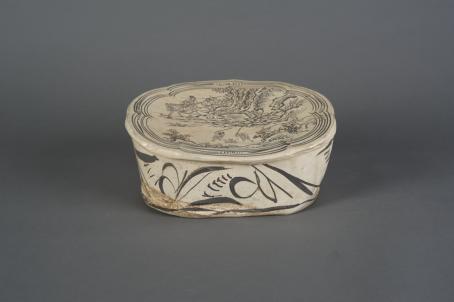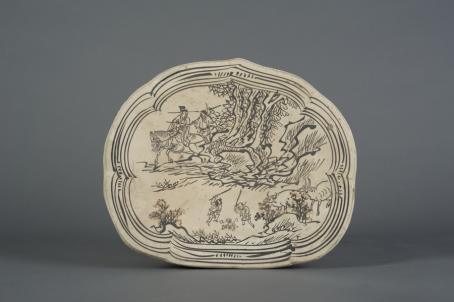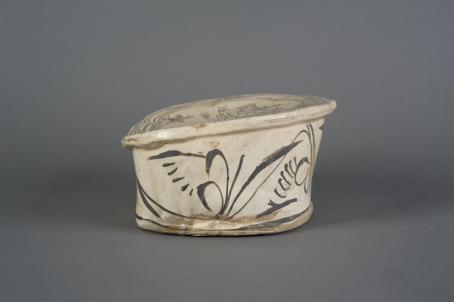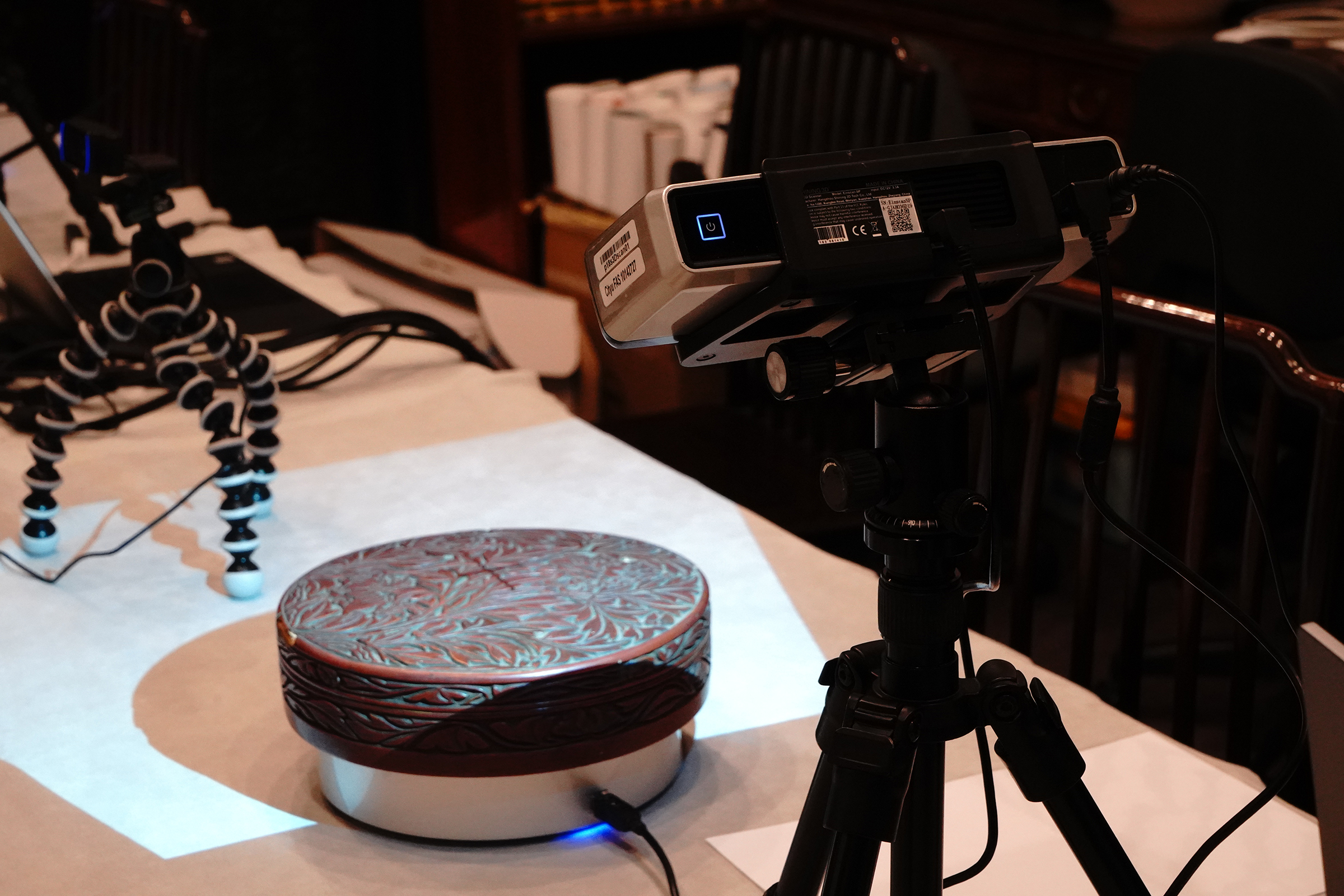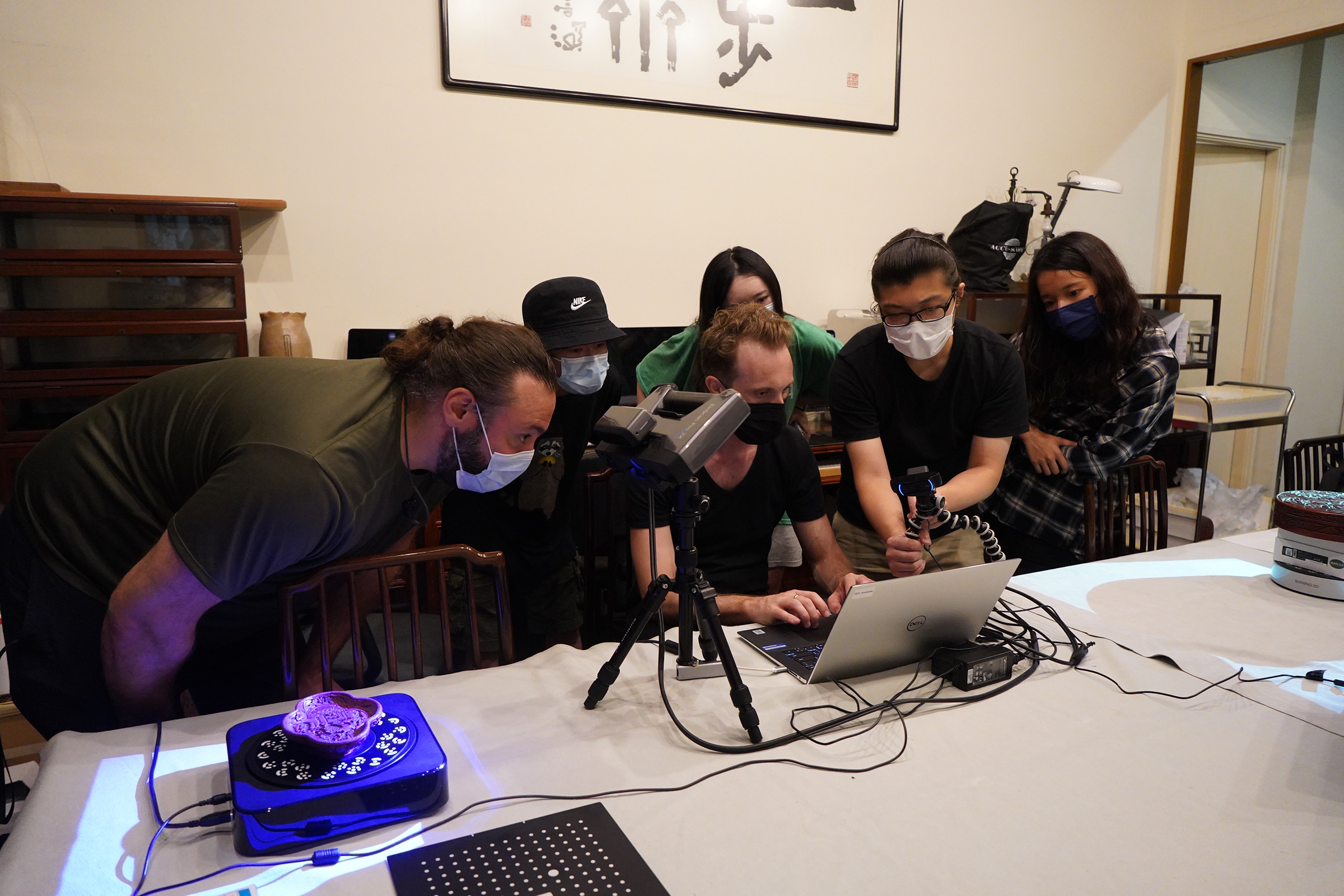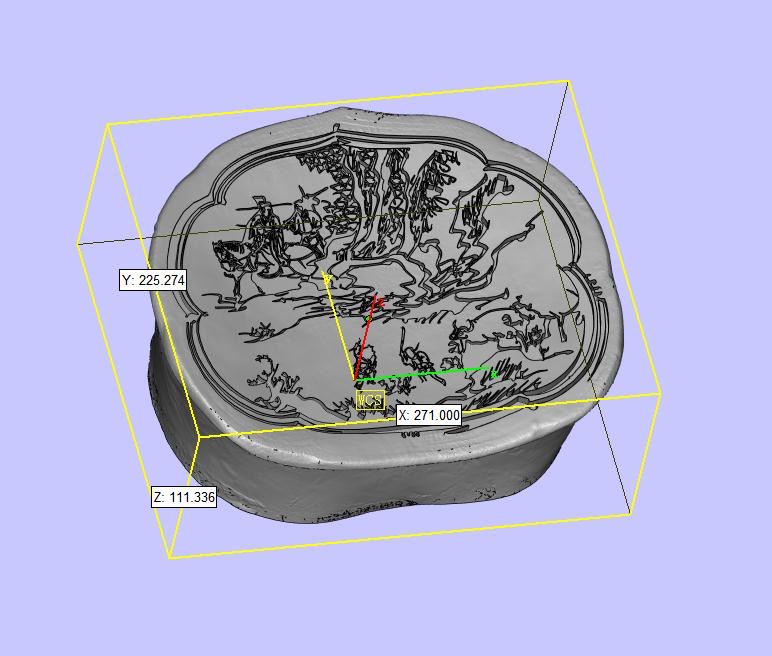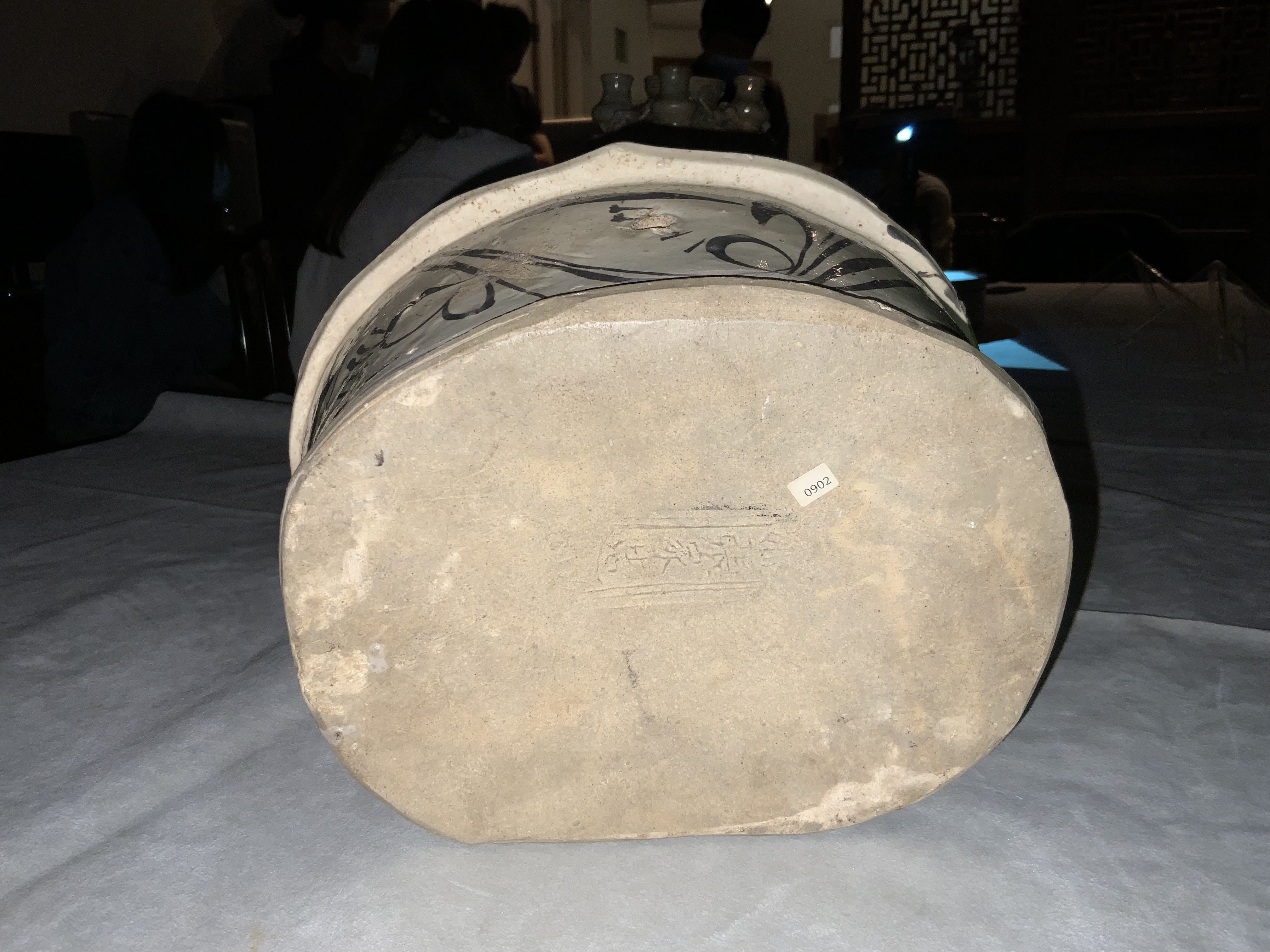My collaborator and I went through a meticulous process of photographing and 3D scanning the ancient Chinese pillow, along with other artifacts, was a significant step in the preservation and study of these cultural treasures. This advanced technique
not only aids in the conservation of the physical object but also allows for a detailed analysis and reproduction of its features, which can be invaluable for educational and research purposes.
The 3D scanning process involves capturing the exact shape and size of the pillow, creating a digital replica that can be examined and manipulated in virtual environments. This method is particularly useful for delicate
or fragile items, as it allows for thorough study without the risk of physical damage. The resulting 3D model provides a comprehensive view of the pillow, offering insights into its construction, wear, and the techniques used by
the artisans of the Northern Song dynasty.
After the scanning process, the digital model of the pillow underwent a cleaning-up phase. This step is crucial as it enhances the quality of the scan, removing any anomalies or distortions that may have occurred during
the scanning process. The refined 3D model then serves as an accurate representation of the original object, suitable for detailed analysis and display. The hand-painted pattern from the surface of the pillow was extracted from
the photos, and then engraved onto the 3D model of the pillow, recreating the original artwork in a digital format. This not only preserves the visual aspects of the pillow but also allows for the pattern to be studied independently
of the object, providing valuable insights into the artistic styles and motifs of the time.
The combination of 3D scanning and digital artistry exemplifies the intersection of technology and cultural preservation. By employing these modern techniques, researchers and historians can gain a deeper understanding
of ancient artifacts, ensuring that their legacy is preserved and appreciated for generations to come.
The digital model created from the 3D scanning and artistic recreation of the ancient Chinese pillow opens up a myriad of possibilities in the fields of artifact recreation, digitization, and art projects. The potential
applications of this model are varied: it can be used as an educational tool or an artistic inspiration, as well as used in the field of artifact reproduction, restoration and preservation, for virtual exhibitions, interactive
and augmented reality experiences, and further research and analysis.
